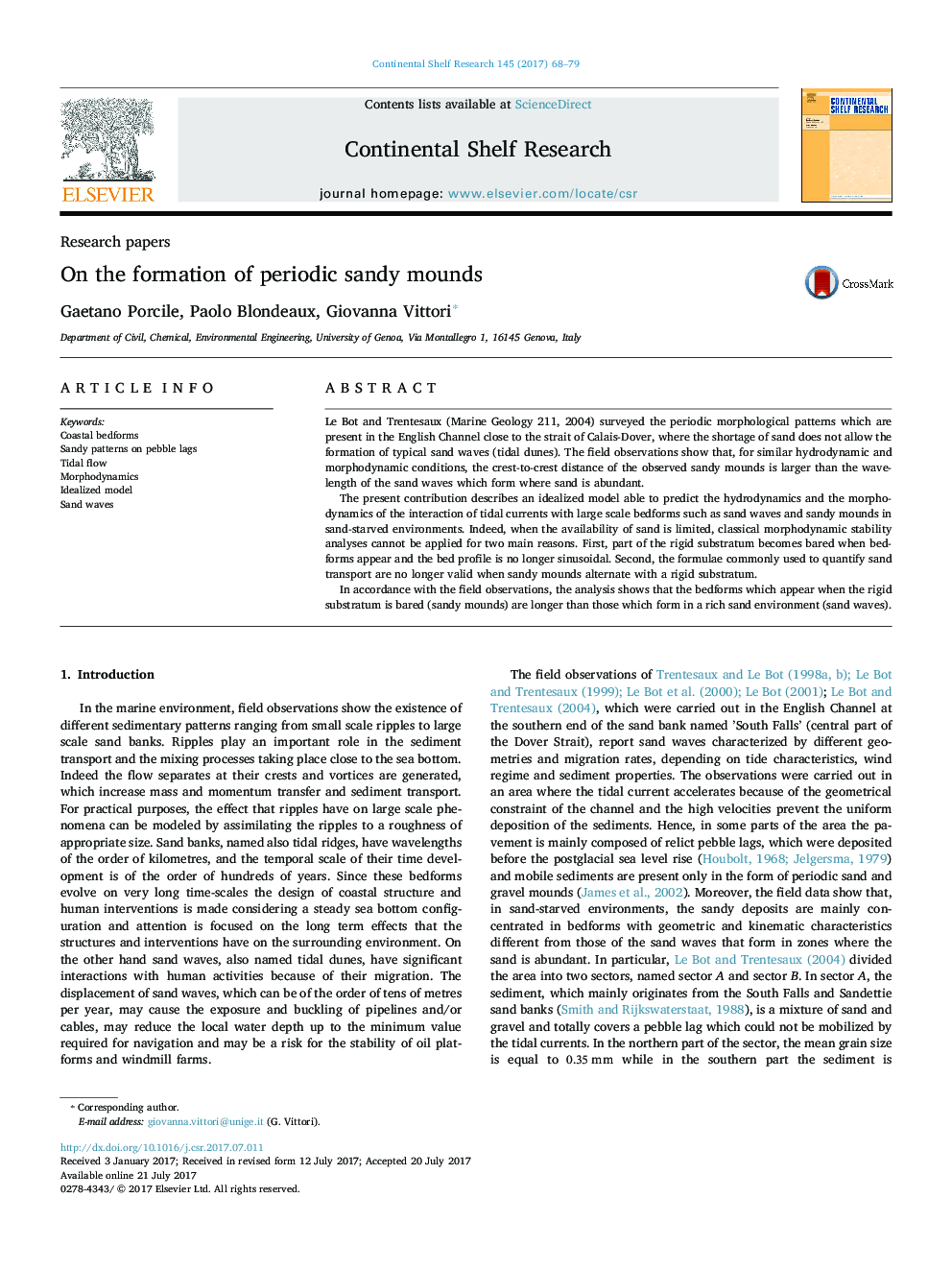| Article ID | Journal | Published Year | Pages | File Type |
|---|---|---|---|---|
| 5764420 | Continental Shelf Research | 2017 | 12 Pages |
â¢Sand waves in sand-starved environments differ form those in sand-rich environments.â¢This idealized model predicts the profile of sand waves in sand-starved environments.â¢Morphodynamic stability analyses cannot be used in sand-starved environments.
Le Bot and Trentesaux (Marine Geology 211, 2004) surveyed the periodic morphological patterns which are present in the English Channel close to the strait of Calais-Dover, where the shortage of sand does not allow the formation of typical sand waves (tidal dunes). The field observations show that, for similar hydrodynamic and morphodynamic conditions, the crest-to-crest distance of the observed sandy mounds is larger than the wavelength of the sand waves which form where sand is abundant.The present contribution describes an idealized model able to predict the hydrodynamics and the morphodynamics of the interaction of tidal currents with large scale bedforms such as sand waves and sandy mounds in sand-starved environments. Indeed, when the availability of sand is limited, classical morphodynamic stability analyses cannot be applied for two main reasons. First, part of the rigid substratum becomes bared when bedforms appear and the bed profile is no longer sinusoidal. Second, the formulae commonly used to quantify sand transport are no longer valid when sandy mounds alternate with a rigid substratum.In accordance with the field observations, the analysis shows that the bedforms which appear when the rigid substratum is bared (sandy mounds) are longer than those which form in a rich sand environment (sand waves).
